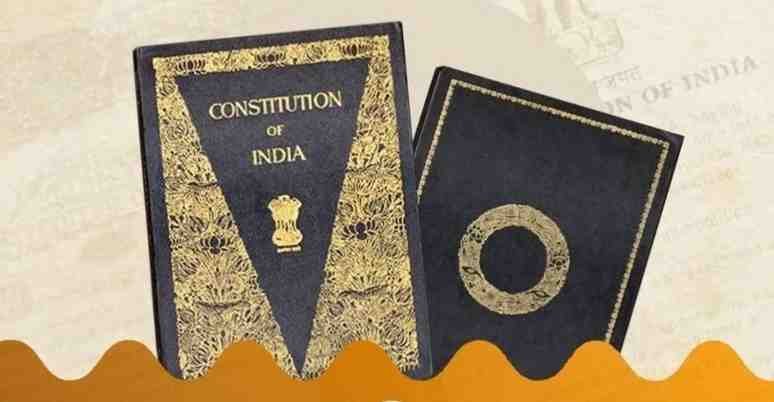Policy and Planning Bureau of Central Government of India requested every academic institution of India to organize programs to teach their students and teachers the importance of Constitutional values and the rights and duties it upholds. No doubt it is noble effort to remind and reiterate the soul of Indian politics and state culture. Not only students, but all citizen should take pledge to follow this fundamental philosophy of Indian Political Culture.
Just after getting premiership, PM Narendra Modi Ji started giving emphasis on the values and ethos of Sambidhan (Constitution) and since 2015, we are celebrating Constitution Day (Sambidhan Divas) on 26 November to celebrate the adoption of the Constitution of India by the Constituent Assembly.
It is actually a tribute to the framers of the document, especially the Chairman of the Drafting Committee, Dr. B. R. Ambedkar. It started on the year of 125th Birth Centenary of the Father of Indian Constitution. He had the distinction of having spoken the greatest number of words in the Constituent Assembly debate. However, about 36 lakh words were spoken in all in almost 3 years to draft the constitution holding 11 sessions over a 165-day period.
Drafting this Constitution was not so easy as there were multiple types of states and people and problems in India. Even after Indian independence on 15th August, 1947, India was under British Parliament with ‘Dominion’ status and there were princely states and French and Portuguese colonies in the Indian subcontinent. India also divided and discriminated according to gender, race, region, religion, caste and class.
So laying principles of justice, liberty, equality and fraternity and making India as a ‘Socialist Republic’ was not so easy in time of Cold War. But kudos to the 389 (reduced to 299 after the partition of India) members of Constituent Assembly who framed the world’s lengthiest written Constitution, which grounded democratic ethos so deep that India became an iconic example of Democratic Republic while our neighbors and others are facing military coup and civil wars.
In its 395 articles in 22 parts and 8 schedules, our predecessors tried to make a legal framework and solution of eco-socio-political problems of India. Although it got amended so many times, but still, we cannot overlook foresight of our forefathers and salute them for thinking so comprehensively.
Most debated portion of Constitution is about Fundamental Rights which was debated for about 16 days, i.e., about 14% of the clause-by-clause discussion. Other portions debated most was the Directive Principles of State Policy (was discussed for about 6 days, about 4%); the concept of citizenship (about 2%).
But unfortunately, women issues were never discussed as women members contributed to about 2% of the discussions and there were only 15 women members in the Assembly and out of them, only 10 took part in the debates. Members of princely states also were not so active in discussion (contributed to about 6%) may be because of their less democratic knowledge. But members from provinces contributed to about 85% of the discussions may be because of their log practices of democratic discussion in time of provincial parliament sessions of British India.
Whatever is the percentage, none can doubt about the success of Constitution makers about sustainability and success of the Constitution. Now the question is how much we are following values and principals enshrined in the Constitution?
As per Preamble of 26th November, 1949, WE, THE PEOPLE OF INDIA, having solemnly resolved to constitute India into a SOVEREIGN SOCIALIST SECULAR DEMOCRATIC REPUBLIC and to secure to all its citizens: Socio-eco-political JUSTICE; LIBERTY of thought, expression, belief, faith and worship; EQUALITY of status and of opportunity; and to promote among them all FRATERNITY assuring the dignity of the individual and the unity and integrity of the Nation.
Everyday we hear the news of breaking those values in different parts of India. But, as a watchdog, Indian judiciary is taking care of Indian Constitutional ethos and India became an example of Democracy, Pluralism and Republican Political Society.








